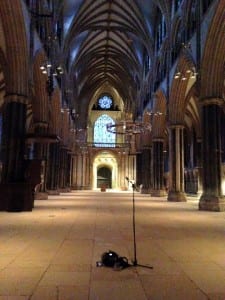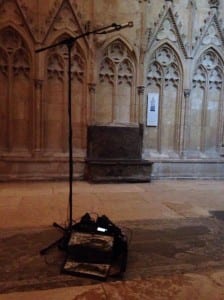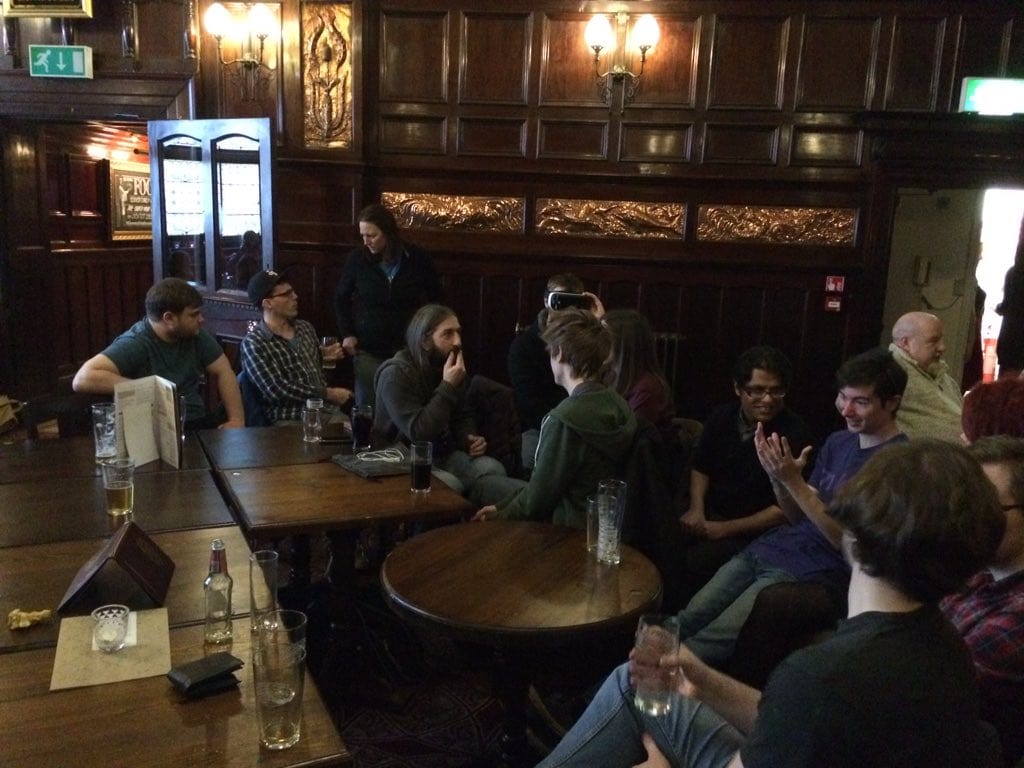Dark Souls is a third-person, role-playing, fantasy game, set in the fictional kingdom of Lordran. I’ve decided to use Dark Souls as a reference point for Taphobos, and will evaluate its sound in this post.
In all of these game sound evaluation posts, I will explore two main areas of the sound, and then eventually i’ll do a big post about both and how i’ve drawn from other games to create the sounds for mine. Those two main areas are footsteps and ambience. Aside from object sounds, Taphobos’ main sound elements are the footsteps of the player, and the ambience of the location.
The footsteps in Dark Souls are a key element to the characters movement. Although my game is first-person (from the POV of the character) and this game is third-person (the camera is above or behind the character), I still think it is a relevant reference and something I can draw from for inspiration.
The footsteps are heavy and chunky, reflecting the characters heavy walk and pronounced presence. This video illustrates the footsteps clearly, and also features environments similar to those in Taphobos. I like how clear and bold the footsteps are, they react well with the ambience of the environments and I also like the added body movement mixed in with the footsteps. The different surfaces are very obvious, perhaps too obvious in places, but nevertheless, they aptly describe the texture of the surface audibly. The only negative I can really see in regards to the footsteps in this section is the repetitiveness and the fact you can clearly tell the footstep recordings are repeated. It also doesn’t sound like the pitch of the files were modulated at all, this is a trick that can be used very effectively to add to the perceived realism of the sound. I imagine the limited number of footsteps sound files was a result of both a limited audio file budget (the game’s overall size is limited, and as such the audio only has a specific amount of that space to use) and possibly the fact it was released on consoles before PC, and consoles often have a smaller capacity than PCs. It could further be because the game has such a variety of sounds and a large number of variations, only a small number of individual sound files could be allocated from the audio budget.
Given that my game is both for PC, and also has a relatively limited number of sounds, so the audio budget isn’t a massive concern – as such, I can use a larger number of footstep recordings and create more of a sense of realism. I’m actually yet to speak to the developer about the amount of space I have for audio, this is something i’ll discuss when I meet with him next.
The second main element I want to focus on is ambience. Ambiences are tricky, because technically the environment may not have a large number of sound emitters (acoustically speaking), but the sound designer still has to fill that space with *something* as the player expects to hear a solid ambient background. Much of Dark Souls takes place in large halls, caves and other such reverberating chambers, similar to the church in Taphobos. A trick I have noticed the designers used for these huge echoing spaces, is to create ‘real’ drones, a low, rumbling, ever-present hum made of indistinguishable elements. In this example, we hear this low rumbling drone, as well as some water droplet sounds peppered into the mix. For pretty much the entirety of the ambience in this scene, the main element is this rumble. I had initially intended my church environment to be relatively empty in Taphobos, but I think filling it with some kind of subtle drone like this would be very cool. Perhaps changing the drone’s properties as the character moves through the different environments would be a good idea to explore. My other environment is outside, in a graveyard. Again, other than objects, the ambience sound emitters are limited – although not as limited as the interior. In this example from Dark Souls, the space is filled with rustling trees, distant creatures and animals, light rain and occasional wind. These are some key elements I can include in my own ambient soundscape; myself and the developer have already discussed the prominence of trees in the environments, so this is something I will certainly draw from. I like the modulating, evolving nature of the tree rustle, although I feel as if the constant, almost wall of sound, is almost overpowering. When listening for a long period of time and focusing directly on the ambience, some glaring repetition becomes clear. Again, this is probably largely due to the restricted audio budget limiting the length of the ambient loops.
Lastly, this is another similar environment in Dark Souls to the church in Taphobos: another droning rumble, this time less bassy and with perhaps more depth to the reverb, but again a maintained ambience soundscape. I like this particularly, and I think i’ll explore something similar in Taphobos.
Overall, Dark Souls is a very dark and specifically ‘fantasy’ game, something Taphobos is definitely not. However, it does focus on realism and the use of ambience is a great one – these are influences I will take in my sound to make Taphobos both believable and immersive.
(LO2)


